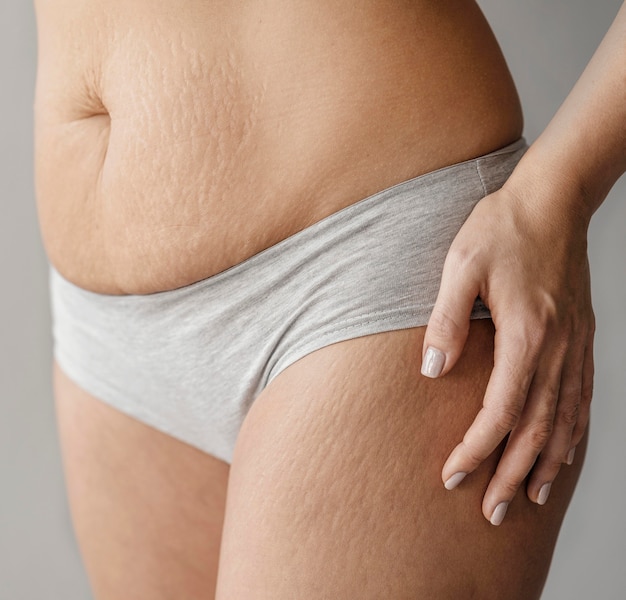
Contents
Introduction:
Stretch marks can be a source of self-consciousness for many individuals, affecting both men and women of different ages and body types. While they are a natural occurrence resulting from rapid growth or weight fluctuations, some individuals may seek to remove or reduce the appearance of stretch marks. Stretch mark removal surgery offers a potential solution for those who desire a transformative change. In this article, we explore the process and results of stretch mark removal surgery, showcasing the before and after transformation of individuals who have undergone this procedure.
I. Understanding Stretch Marks:
Before delving into the transformative effects of stretch mark removal surgery, it is essential to understand what stretch marks are. Stretch marks, medically known as striae, occur when the skin stretches rapidly, leading to collagen and elastin fibers breaking or tearing in the middle layer of the skin. Common causes of stretch marks include pregnancy, weight gain or loss, growth spurts during adolescence, and bodybuilding.
II. The Stretch Mark Removal Surgery Procedure:
a. Consultation and Evaluation: The journey towards transforming one’s body through stretch mark removal surgery begins with a consultation with a qualified dermatologist or plastic surgeon. During this initial meeting, the surgeon will evaluate the patient’s skin condition, discuss expectations, and provide information about the available treatment options.
b. Treatment Options: Stretch mark removal surgery offers several treatment options, including laser therapy, microdermabrasion, chemical peels, and surgical excision. The most suitable option depends on factors such as the extent of stretch marks, the patient’s skin type, and their overall health.
c. Surgical Excision: Surgical excision involves the removal of the affected skin area containing stretch marks. The surgeon carefully cuts away the affected skin, and the remaining skin is stitched back together. This procedure is often performed under local or general anesthesia, depending on the patient’s preference and the extent of the surgery.
III. Before and After Transformation:
a. Before Stretch Mark Removal Surgery: Individuals seeking stretch mark removal surgery often experience low self-esteem and body image concerns due to the visible presence of stretch marks. Before undergoing the procedure, these individuals may feel hesitant to wear certain types of clothing or engage in activities that reveal their stretch marks. This can significantly impact their confidence and overall well-being.
b. After Stretch Mark Removal Surgery: The transformative effects of stretch mark removal surgery can be truly remarkable. After the procedure, patients often experience a significant reduction in the appearance of stretch marks or their complete elimination. With the removal of these visible marks, individuals regain their confidence and are more comfortable in their own skin. They can wear clothing styles they once avoided and engage in activities without feeling self-conscious.
IV. Recovery and Post-Surgery Care:
a. Healing Process: Following stretch mark removal surgery, the patient’s body needs time to heal. The recovery period may vary depending on the extent of the surgery, but it typically involves taking prescribed medications, keeping the treated area clean, and avoiding strenuous activities that may disrupt the healing process.
b. Post-Surgery Care: To optimize the results of the surgery and maintain the skin’s health, patients are often advised to follow a skincare routine recommended by their surgeon. This may include applying specialized creams or lotions, keeping the skin moisturized, and protecting it from excessive sun exposure.
Conclusion:
Stretch mark removal surgery offers a transformative solution for individuals seeking to improve their body image and regain confidence. Through surgical excision and other treatment options, individuals can experience a significant reduction or complete elimination of stretch marks, resulting in a remarkable before and after transformation. However, it is crucial for individuals considering this procedure to consult with a qualified professional and have realistic expectations about the potential outcomes. Remember, every body is unique, and embracing our imperfections is an important part of self-acceptance and self-love.

